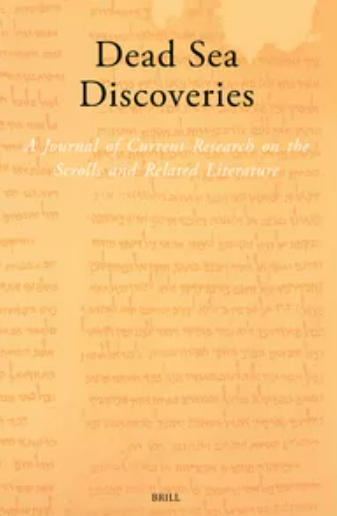https://doi.org/10.1163/15685179-bja10012
제2성전기 히브리어의 가장 확실한 모습은 사해 두루마리, 특히 헬레니즘과 로마 시대에 실제로 작성된 텍스트들을 통해 제공된다. 몇몇 중요한 언어적 지점에서, 사해 두루마리 히브리어는 마소라 고전 성서 히브리어 자료의 기록된 전통, 즉 자음(consonantal) 전통의 증언에 반하여 티베리아 낭독 전통의 모음화(vocalization)와 일치한다. 이 논문은 이에 대한 사례 연구를 제시한다. 한편으로, 이러한 사해 두루마리와 티베리아 낭독 전통의 모음화 유사성은 각각의 언어적 전통이 비교적 후대에 형성된 성격과, 티베리아 낭독 전통이 고전적인 성서 기록 전통에 비해 2차적으로 발전했음을 보여주는 증거가 된다. 다른 한편으로, 바로 이 동일한 유사성은 티베리아 발음 전통이 비잔틴이나 중세 시대가 아닌, 제2성전기에 결정화(crystallized)되었다고 보는 것이 타당함을 입증한다. 마지막으로, 사해 두루마리와 티베리아 낭독 전통이 함께 고전적인 성서 자음 전통에서 벗어나는 경우는 관련 언어 데이터의 극소수에 불과하며, 대부분의 데이터는 역사적 연속성 및/또는 유사한 역사적 깊이를 가진 언어적 이질성을 특징으로 하므로, 사해 두루마리 히브리어와 티베리아 낭독 전통이 제2성전기에 결정화되었다는 사실이, 그것들이 진정한 철기 시대(Iron Age)의 특징들을 일상적으로 보존하는 것을 결코 방해하지 않는다는 점이 분명하다.
The most authentic portrait of Second Temple Hebrew is afforded by the Dead Sea Scrolls, especially by those texts actually composed in Hellenistic and Roman times. On salient linguistic points Dead Sea Scrolls Hebrew agrees with the vocalization of the Tiberian reading tradition against the testimony of the written, i.e., consonantal, tradition of Masoretic Classical Biblical Hebrew material. This article presents a case study. On the one hand, these Dead Sea-Tiberian vocalization affinities are evidence of the relatively late character of their respective linguistic traditions and of the secondary character of the developments in the Tiberian reading tradition vis-à-vis the classical biblical written tradition. On the other hand, these same affinities demonstrate that the Tiberian pronunciation tradition is plausibly regarded as one that crystallized in the Second Temple Period, rather than in Byzantine or medieval times. Lastly, since joint Dead Sea-Tiberian reading departures from the classical biblical consonantal tradition constitute a tiny minority of their relevant linguistic data, most of which are characterized by historical continuity and/or linguistic heterogeneity of comparable historical depth, it is clear that the Second Temple crystallization of Dead Sea Scrolls Hebrew and the Tiberian reading tradition in no way preclude their routine preservation of authentic Iron Age features.






